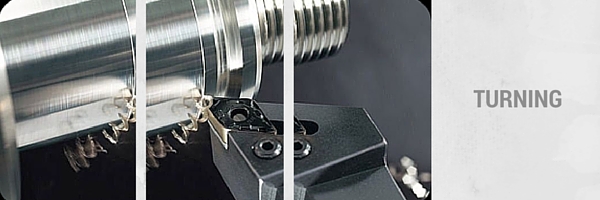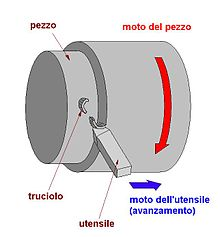
After our previous post blog about the “Plastic cold deformation”, today we would like to talk to you about the turning. It is a machining process in which cutting tools, typically a non-rotary tool-bit, describes a helical tool-path by moving more or less linearly while the workpiece rotates.
The turning: how and when used it?
 The tool’s axes of movement may be literally a straight line, or they may be along some set of curves or
The tool’s axes of movement may be literally a straight line, or they may be along some set of curves or
angles, but they are essentially linear (in the nonmathematical sense). Usually the term “turning” is reserved for the generation of external surfaces by thiscutting action, whereas this same essential cutting action when applied to internal surfaces (that is, holes, of one kind or another) is called “boring”. When turning, a piece of relatively rigid material (such as wood, metal, plastic, or stone) is rotated and a cutting tool is traversed along 1, 2, or 3 axes of motion to produce precise diameters and depths. Turning can be either on the outside of the cylinder or on the inside (also known as boring) to produce tubular components to various geometries.
What types of turning?
- Depending on the surface to be obtained:
- Flat turning (for a flat surface perpendicular to the axis of rotation of the workpiece)
- Taper turning (for conical surfaces)
- Cylindrical turning (for coaxial cylindrical surfaces with axis of rotation of the workpiece)
- Helicoidal turning (helical surfaces, for example the execution of threads on lathe)
- Turning of shape or profiling (for surfaces of complex contours)
 2. Depending on the position of the tool:
2. Depending on the position of the tool:
- Outside turning (outside of working piece)
- Inside turning (processing of the inside of one piece cable)
According to the degree of the finishing machining is so named:
- Roughing (the first steps of processing)
- Finishing (the final steps of processing)
Find out our stainless steel items.
Try the Inoxmare web shop and show all availability, prices and discounts.
Click here


